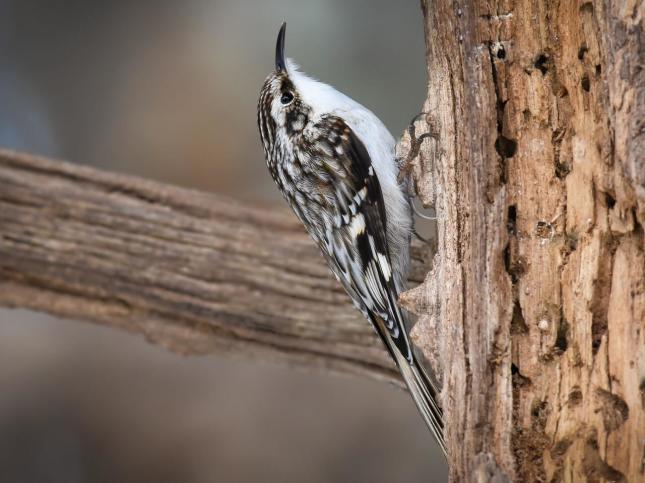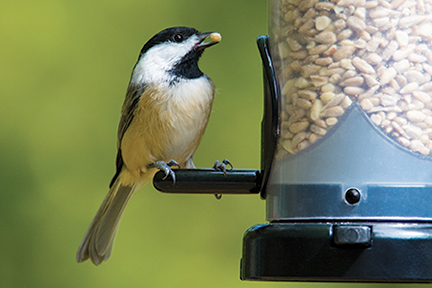
Fun Facts About Brown Creeper
- Brown Creepers are well camouflaged and inconspicuous against tree bark in a shady forest, but if you keep your eyes peeled for movement, you may find a creeper zigzagging upward as it gleans insects from the trunk, or see the small shape of one dropping from high on a trunk to the base of a nearby tree. Once learned, the high, insistent call note can alert you to the presence of these birds. Look for Brown Creepers in mature woods, if possible, though you can also find them in parks and suburban areas in the winter.
- Though they eat mostly insects, in winter Brown Creepers will eat suet and peanut butter, and occasionally sunflower seeds, pine seeds, grass seeds, and corn. You’re more likely to see them if there are large, old trees nearby. They mainly patrol large, live trees with deeply furrowed bark, which harbors the highest densities of insects. They glean, probe, and peck at the trunk with their long, downcurved bills. Starting near the bottom of the trunk, they work their way up the tree to within several feet of the top, then fly to the bottom of another tree (or sometimes the same one) to begin again.
- The Brown Creeper spends most of its time spiraling up tree trunks in search of insects. It holds its short legs on either side of its body, with the long, curved claws hooking into the bark, and braces itself with its long, stiff tail. Both feet hop at the same time, making the bird’s head duck after each hop. Because of its specialized anatomy, the Brown Creeper rarely climbs downward: once high in a tree, it flies down to begin a new ascent at the base of a nearby tree.
- Both adults investigate several possible nest sites. They almost always choose a spot between the trunk and a loose piece of bark on a large, dead or dying tree—either deciduous or coniferous—in a dense tree stand. They occasionally nest in large live trees with peeling bark or in dead portions of live trees. The female takes a week or two to build the nest, while the male helps by bringing nesting material (he often sings nearby). She builds the frame of the nest by layering twigs and strips of bark. She uses insect cocoons and spider egg cases to stick those materials to each other and to the inner surface of the tree bark. The nest cup, up to 2.5 inches deep and 6 inches across, consists of wood fibers, spider egg cases, hair, feathers, grass, pieces of leaves, lichens, and mosses.
- The oldest Brown Creeper on record was at least 5 years, 5 months old when it was recaptured and rereleased during banding operations in Illinois in 2010.

